
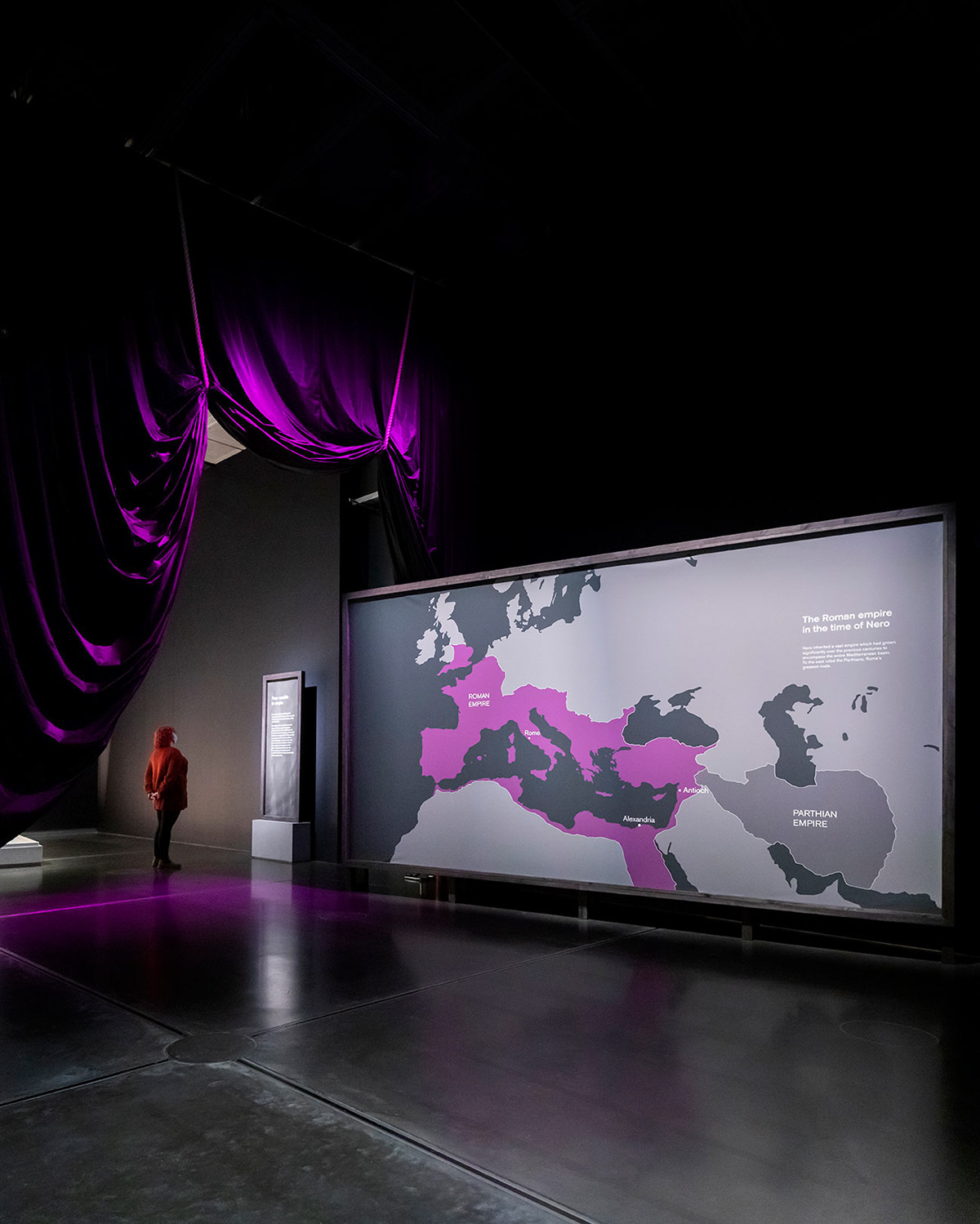




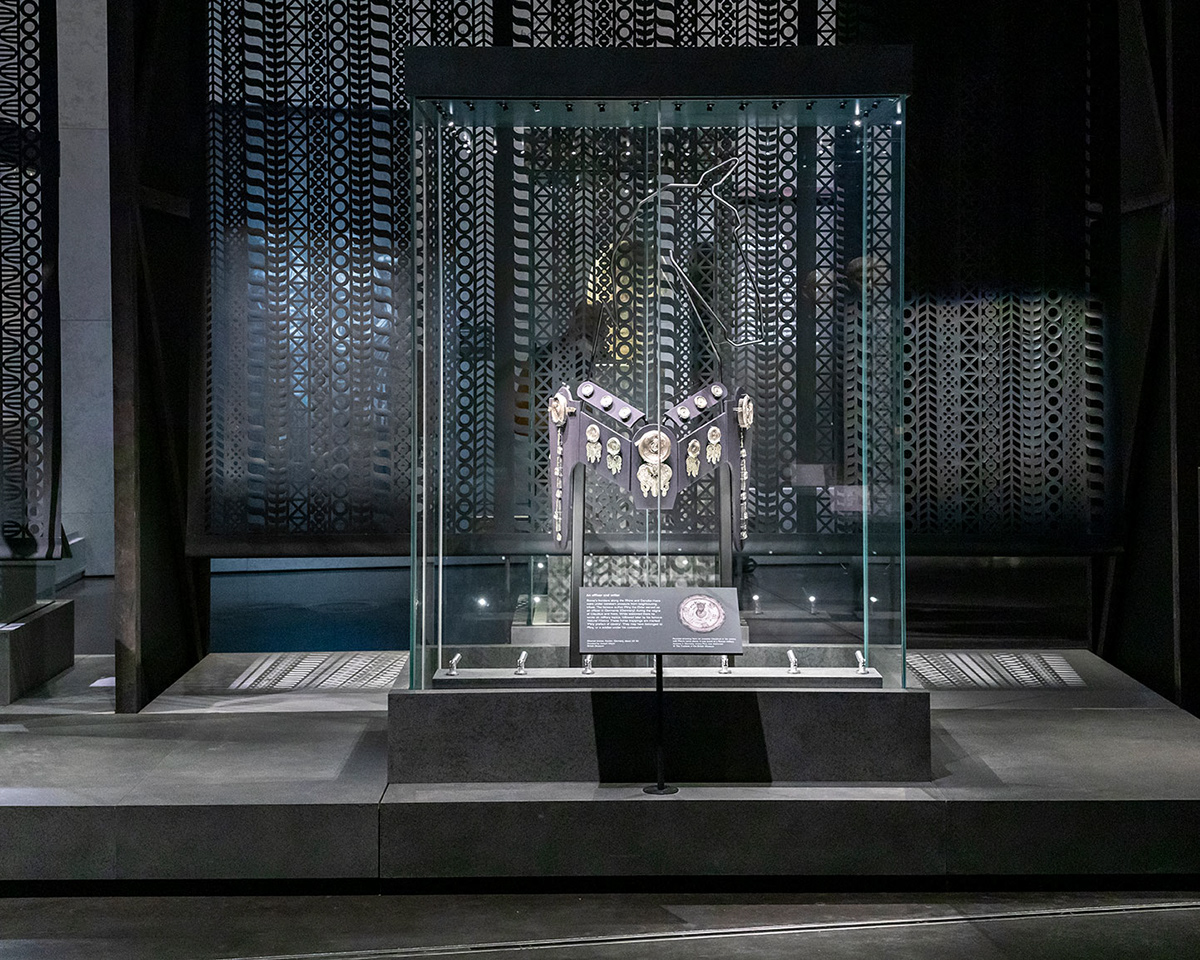
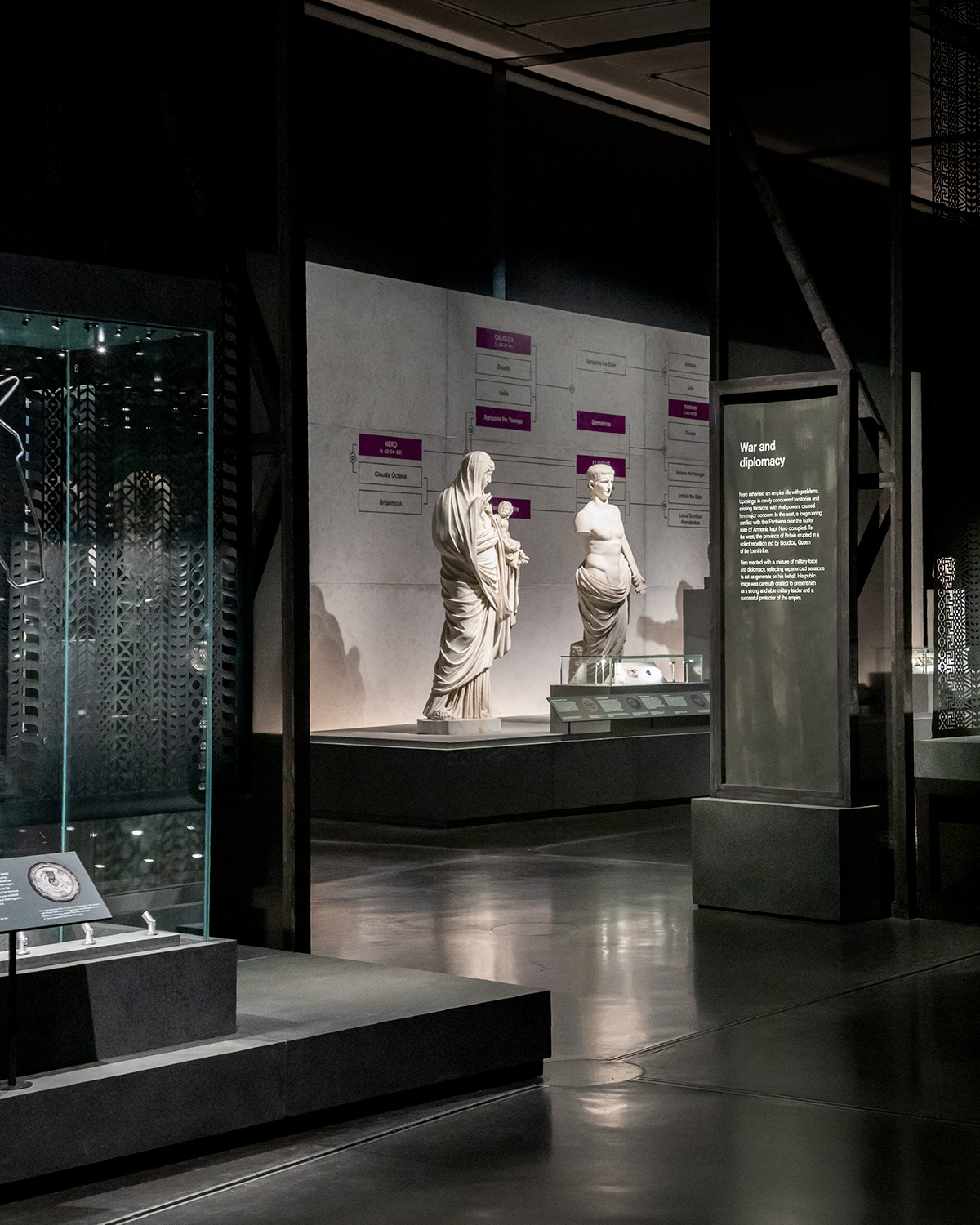



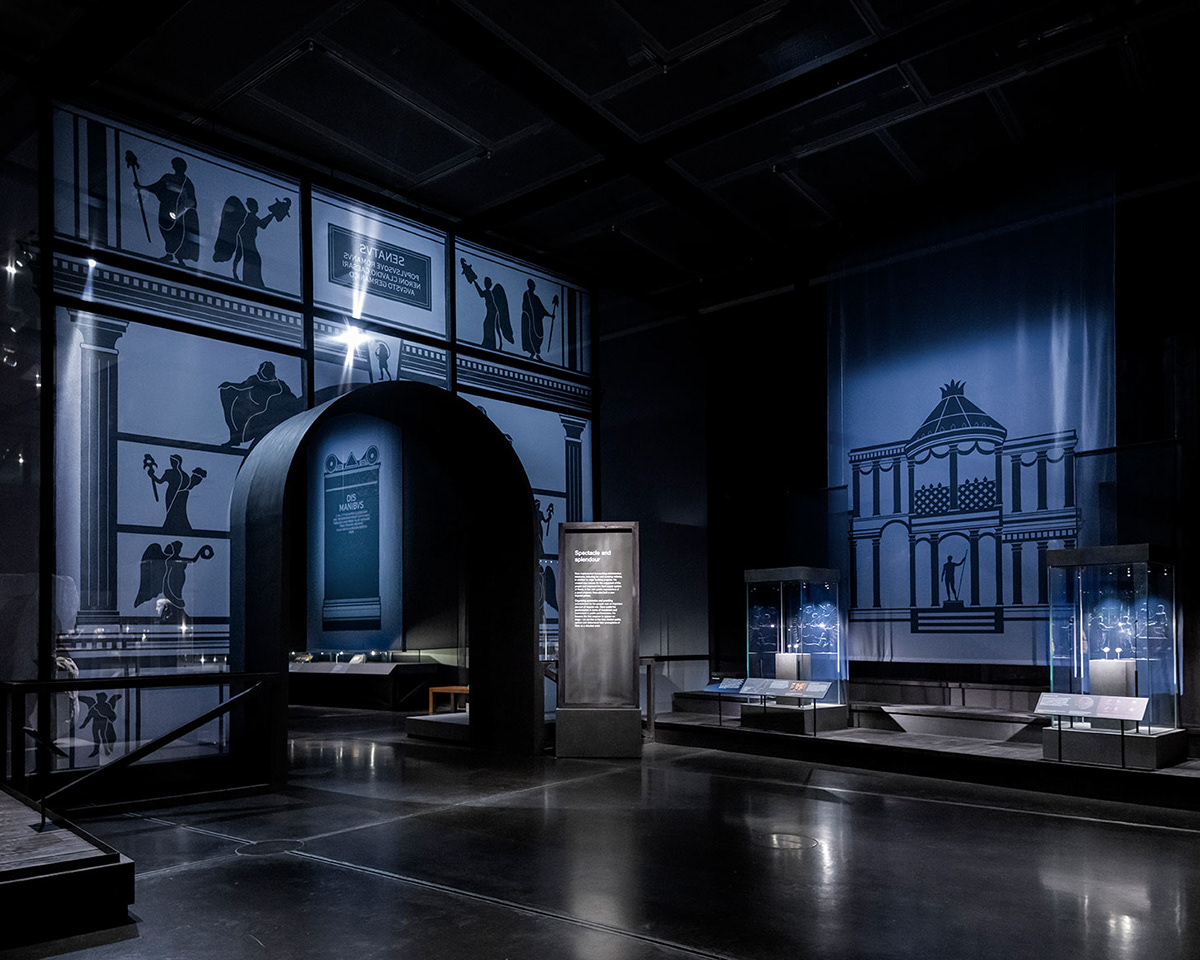
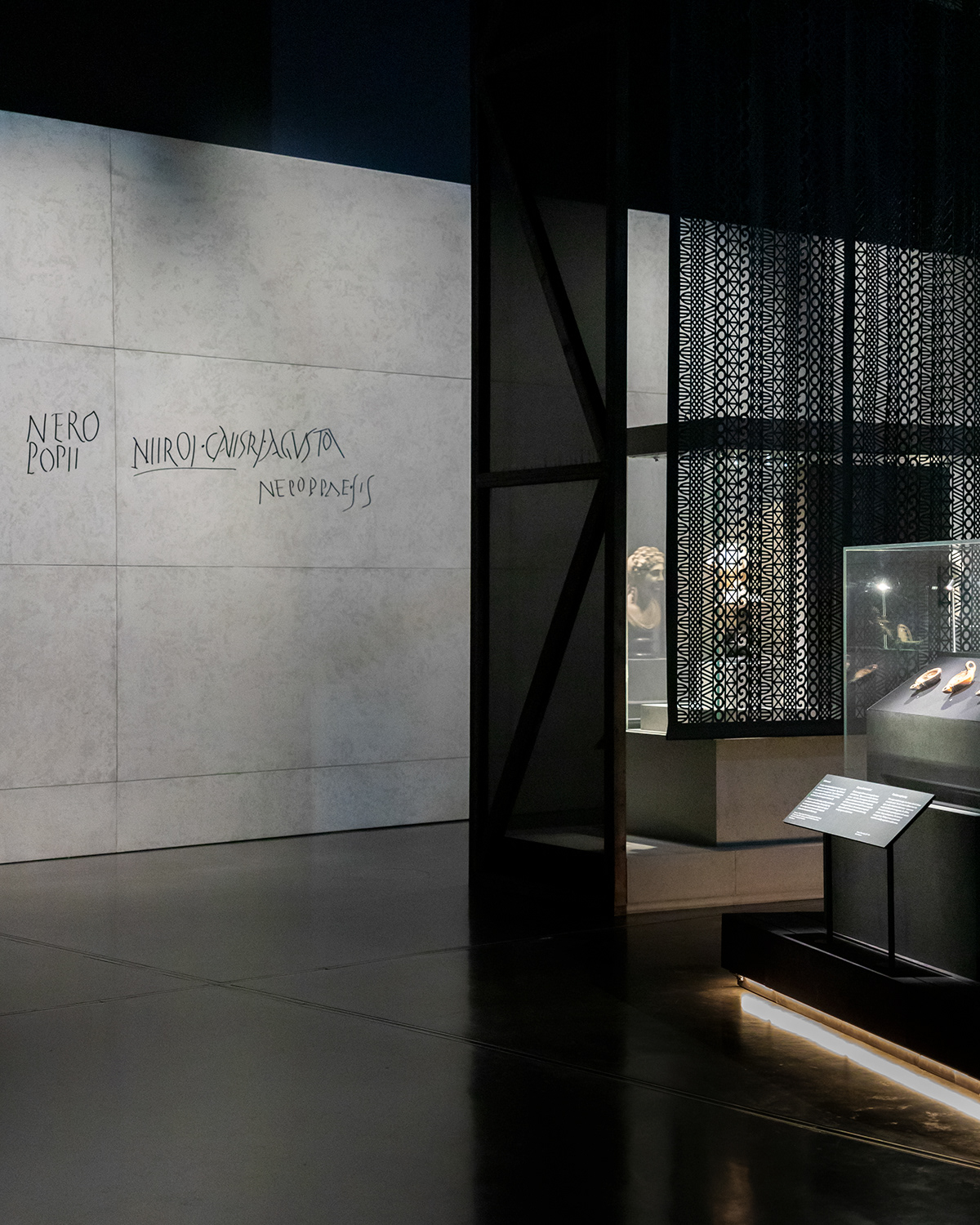




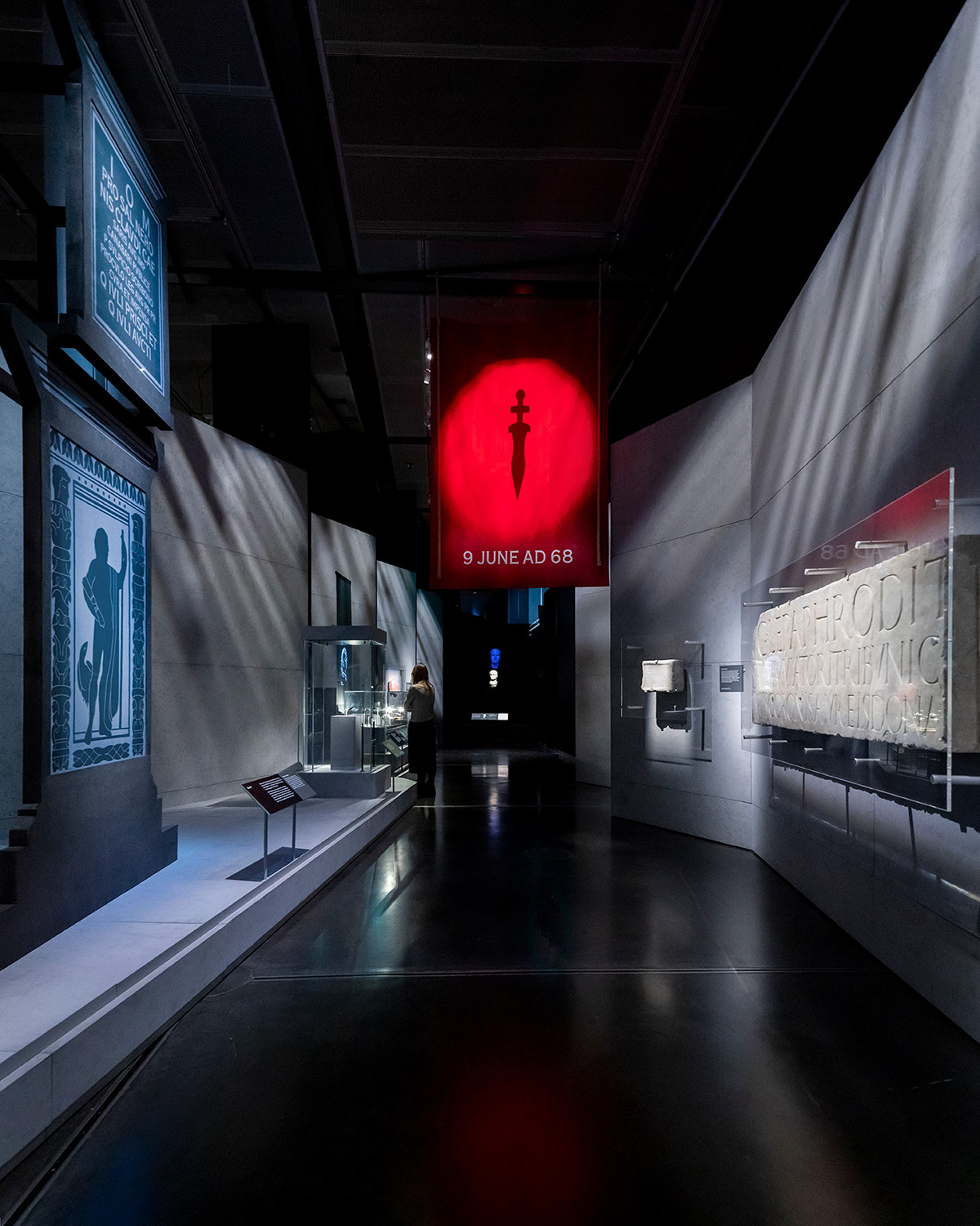

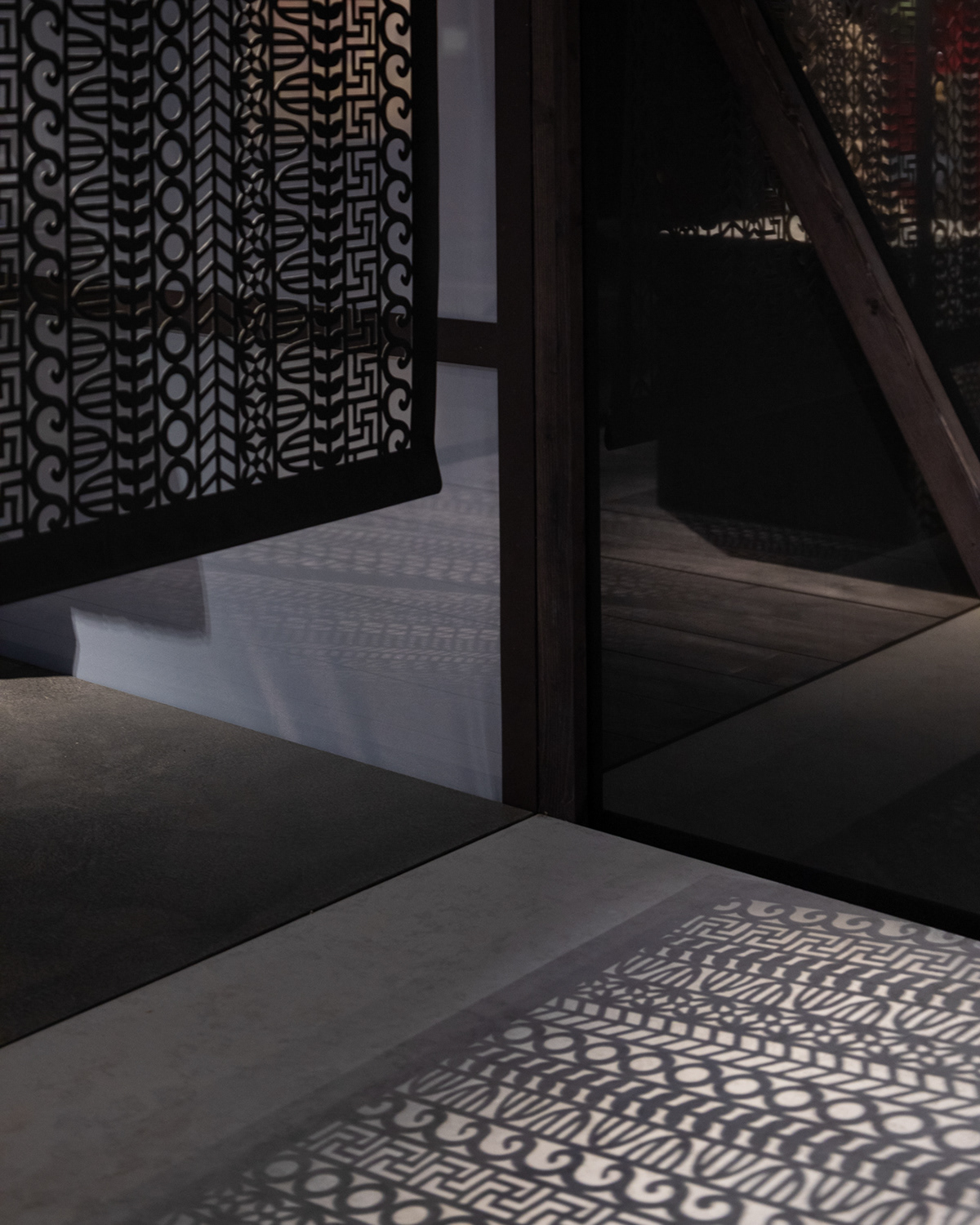
Nero: the man behind the myth is a major exhibition at the British Museum. Drawing on the latest research, this major exhibition questions the traditional narrative established almost 2000 years ago, of the ruthless tyrant and eccentric performer, revealing a different Nero, a populist leader at a time of great change in Roman society.
Working with the curators, we used Nero’s persona as a performer as an analogy in our design. Through the display of some 200 spectacular objects, we have created a series of sets that evoke a sense of tragic drama using subtle theatrical techniques. The narrative journey that unfolds within a framework of ‘centre stage’ and ‘back stage’, organised around two linear ‘spines’ formed of 6m theatrical flattage wrapped with gauze material. Using this sense of place and scale, poignant 1:1 moments are punctuated by dynamic, large-scale theatrical experiences.
Inspired by The Fourth Pompeian style we have designed large-scale graphics to represent an architectural context from the arched entrance to Rome to the Circus Maximus. Traditional motifs have been re-interpretated as contemporary fret cut panels. The rich textures emphasized by dramatic lighting by DHA create high visual impact and bring a sense of magic to the experience. Tyrian purple associated with power and royalty is used as an accent colour through the space.
Large quotes weaved throughout the exhibition contrast the voices of the loud public sphere, and the whispers of private life, creating a balanced portrait of Nero. Details on objects, such as coins, are enhanced by distinctive black and white illustrations and AV, in which characters are enlarged and seem to emerge from the dark.
Accessibility is fundamental to the design; with generous circulation space, and a clear hierarchy for labels and information we have aimed to create spaces that transition seamlessly for all visitors. The objects are displayed with generous space and present the visitor with a unique opportunity to get close to them. We have designed some displays that present objects in context, such as gladiators in action, and slave chains displayed to convey their weight and cruelty.
We have created a sense of place throughout. We use materials that suggest concrete, which was pioneered by Nero. We evoke architectural elements to give a sense of moving through time and place, from Britain to Rome via a grand arch, and from the Circus Maximus to the Great Fire. Our representation of the Domus Aurea, or golden palace, ushers a dramatic change of pace. This area evokes the opulence of Nero at the pinnacle of his reign. It is also a turning point in the narrative as the visitor then embarks on the turbulent end to Nero’s life and the dramatic conclusion to the exhibition, which includes a single bust with a projected animation ‘floating’ in space showing a changing face.
